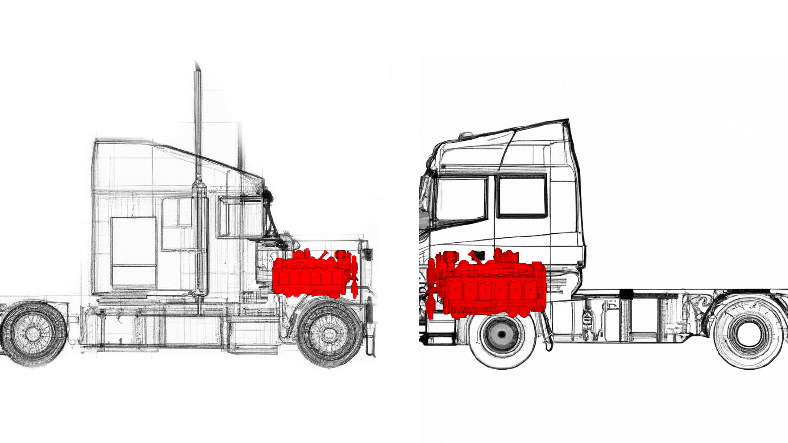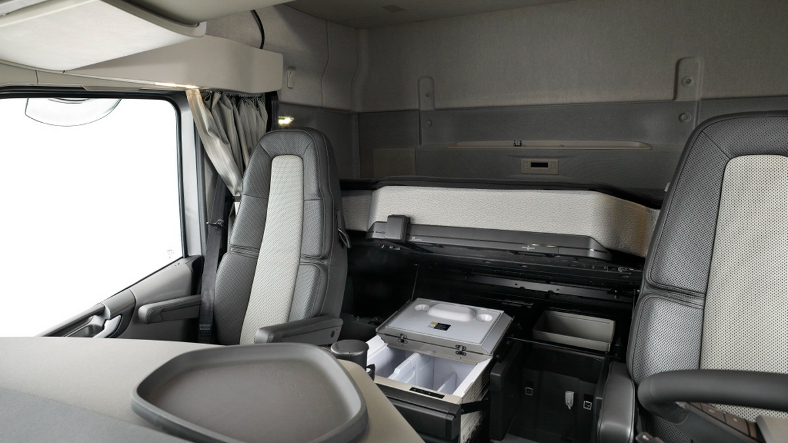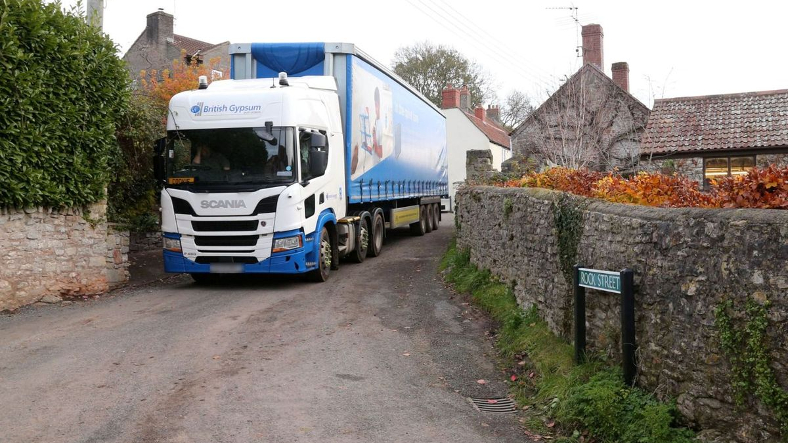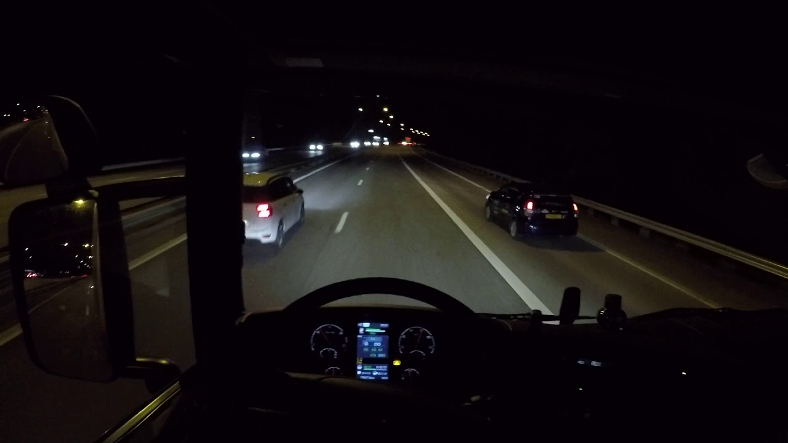The trucks used in regions such as North America and Australia are quite different from the trucks traveling in Europe and our region. Trucks in America officially have a nose. Well, the trucks there have noses, but why don’t our trucks have them? Let’s examine it.
There are many long-nosed trucks in large areas. So many long-nosed trucks, just because it looks nice I think we can all agree that it cannot be used.
Of course, long-nosed trucks in and around Europe, flat-nosed trucks in and around America although rare We see. There are several reasons why this distinction is so sharp; So let’s talk about what they are.
First of all, let’s talk about the legal restrictions on the length of the trucks:
Most of the trucks currently traveling on American highways are long-nosed (standard cabin) trucks, as we have just said. Average lengths total 21 metersand the length of the trailer is 16 meters. Unfortunately, this was not always the case.
There was a problem limiting the length of trucks that could travel on American motorways, Motor Carriers Act. Because of this law, the length of the tow trucks was kept as short as possible and the amount of cargo carried was tried to be kept to the maximum.
However, with the update of this law in 1980, the length limit was abolished and only the size of the towed trailer was limited. Thus, truck manufacturers were able to produce trucks of different lengths. Of course, this regulation only applied to the Americas, and manufacturers in Europe still had a total length rule. 18.75 meters they had to comply. So they continued to keep their noses straight to maximize the amount of payload they could carry.
As you can imagine, trucks with huge engines.

The smallest examples can start with inline 6 engines of around 10 liters and progress to 12-14 liters V8 engines. Of course, these huge engines too. to fit it’s not an easy job. For example, the engine of a flat-nosed truck is positioned directly under the driver’s cab so that it can fit together with the necessary components. Of course, this positioning also brings some disadvantages.

First of all, because the engine is right under you. soundproofing is poor and vibration is huge happens at levels. While this is tolerated in large quantities on new trucks, it was a big problem with trucks in the past. In addition, due to the fact that the engine is under you. your cabin space is small and the ceiling height is low was happening. Considering the time the trucks were on the road, this became a big problem. The solution to this was hidden in long-nosed trucks, which we call standard cabins.
Now that we don’t have a problem with the length anymore, they must have thought why put the engine under the driver, because they added a nose to the truck and placed the engine in this nose. This gave manufacturers two advantages. First and foremost, the cabin area significant growth and increased ceiling height it happened.
Second, the engine away from the cabin The noise and vibrations that come with it have decreased and long journeys have become more bearable. Well, if long-nosed trucks have such important advantages, why aren’t they available in Europe?
The effects of road and city planning on the length of the trucks:

One of the main problems of being a truck driver is that 18 or 21 meter vehicles are in ports, parking lots and in the city. to direct. But the Americans are a little luckier in this regard. As a result of American geography and structuring, cities are separated from each other. it’s far away, the roads are wide and straight, the harbors and parking lots are huge too. This makes it somewhat easier to manage such long vehicles and makes the overall length of the vehicle not a critical issue.

Unfortunately, the situation in Europe is very different. Europe’s geographical structure and its very old urbanization structure; narrow roads, short distances, less maneuvering space causing it to happen. For this reason, you can gain maneuverability. every centimeter It turns into a huge advantage.
At the same time, if you have a little command of fluid dynamics, it is a long-nosed truck. more aerodynamic You can guess what will happen. This also applies to long American highways traveling at high speeds and for long periods of time. to fuel economy provides substantial support.

Contrary to what we mentioned above, however, journeys in Europe are relatively shorter and slower. At the same time, the engines are smaller and more efficient. That’s why aerodynamics doesn’t play as much of a role on European trucks as it does on American trucks.
For this reason, although the Americans abandoned the straight nose and preferred the long nose, the Europeans most likely even if the law allows they would not prefer long-nosed trucks.
Long driving hours and the design of the trucks contribute to these:

In fact, this topic, which will be a continuation of the previous title, is also travel times related to. If you think; The comfort, living space and similar features that the vehicle will provide are directly proportional to the travel times. Some of the trucks that can be the best example of this construction site trucks.
Since a construction site truck will travel a maximum of three to four hours a day and not every other day, any does not need a cabinet. But regardless of America or Europe, long-haul trucks have at least a cabin to hold a bed.

However, of course, our American and European trucks differ in this regard. First, let’s talk a little bit about travel times. An actively operating truck in the United States, on average, per day 14 hours working and that’s 14 hours 11 hours on the way passing. The remaining 3 hours go to extra work such as breaks and refueling. For the rest of the day, the driver sleeps in a truck park and continues the next day.
In Europe, however, the situation is very different. 9 hours limited by law Although it is not possible to pass through, there is no situation that requires driving more than 9 hours in a day anyway. Because as we mentioned above distances are short and journeys are short in duration. Therefore, European trucks can have smaller cabins than their American counterparts without disturbing the driver.
While American drivers own the trucks, Europeans are mostly rented or contract drivers.

One of the big differences between trucks in Europe and trucks in America, or rather truck drivers, is that most American drivers are at the same time. owner of the truck that is. On the other hand, European truck drivers have a high percentage of driving rental cars or contract drivers working as Well, if you ask what effect this has on the design of the truck, let’s explain it right away.
American truck drivers usually spend all their time in their trucks, as they own the truck and trailer. After picking up a load and leaving it in another place, they fill the same trailer again and continue on their way. In this process they don’t get off their trucks for long periods of time. For this reason, a large living space and large storage areas are an important requirement.

However, for European truck drivers, the situation is the opposite. As European drivers usually work with contract or rental trucks, only working hours they are found. For the rest, there will be no need for them to be in the truck because they will never have any business with that truck or that trailer again.
European truck drivers, who we can call luckier in this regard, of course, do not need as much space and comfort as their American colleagues. Already in a region like Europe, flat-nosed trucks the advantages it provides When we think about it, it becomes clear that it is better not to have it.
RELATED NEWS
